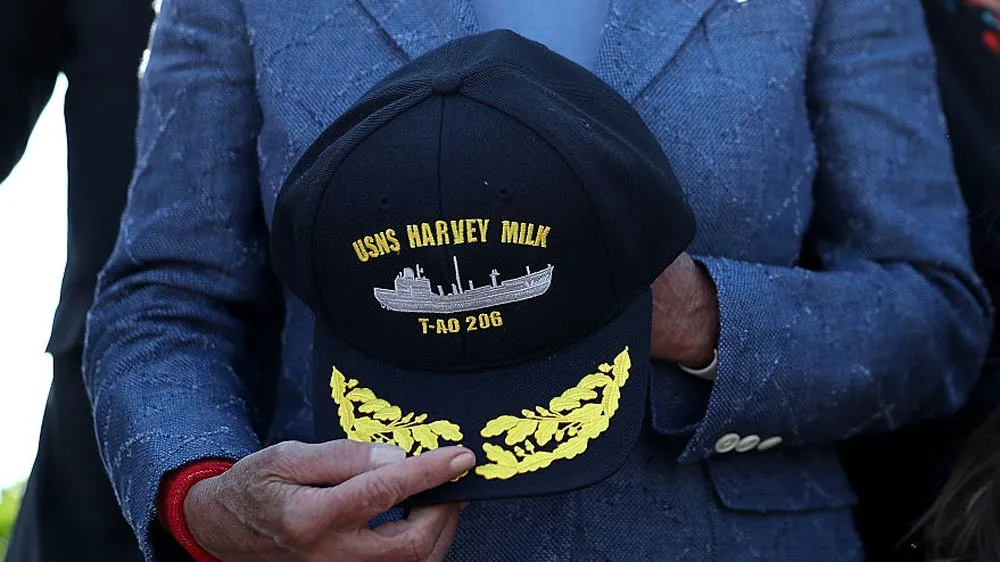May 5, 2011
Transwoman Golfer Prevails in Suit
Kilian Melloy READ TIME: 4 MIN.
A transwoman golfer who brought suit against rules barring competitors who were not "female at birth" has settled with the Ladies Professional Golf Association and the Long Drivers of America, reported the New York Times on May 3.
Transgender golfer Lana Lawless, 57, brought suit last fall, seeking to have a rule that female competitors be born as females struck down. The rule bans competition from men who have undergone sexual reassignment and become legal females, the article said.
Lawless triumphed in the Long Drivers of America competition three years ago, only to be disqualified from her win when the organization barred transgender competitors.
But the matter has now been settled. Both the LPGA and the Long Drivers of America rescinded the ban on transwoman competitors, the article reported, following in the footsteps of the United States Golf Association. Transwomen are also allowed to compete under International Olympic committee rules.
"This resolution will result in the dismissal of the Federal Court Action entitled Lawless v. the Ladies Professional Golf Association and the Long Driver's of America; United States District Court Case Number CV10 4599 DMR," a May 3 PR Web posting said. "Despite the resolution, the LPGA and LDA steadfastly deny that they violated any law or engaged in any wrongdoing."
"The Ladies Professional Golf Association ('LPGA') expresses its appreciation to Lana Lawless for raising the issue of transgender participation in its tournaments and other professional activities," a joint statement by the golfing organization and Lawless said. "Both Ms. Lawless and the LPGA are pleased that the litigation initiated by Ms. Lawless has been resolved in a satisfactory way, and applaud the LPGA members who voted overwhelmingly to remove the 'female at birth' provision from its by-laws."
Another trans athlete, Kye Allums, recently won accolades as the first openly transman player in Division 1 basketball. The National Center for Lesbian Rights accorded Allums the Spirit Award earlier this year. Allums plays on the men's team at George Washington University.
More common, however, is the concern that athletes born male will enter sports as female competitors. The issue of transgender athletes possibly enjoying an unfair advantage due to the gender of their birth has long been an issue in the sports world. Though trans individuals feel an unshakeable and deep-seated conviction about their gender--even if it does not match their physiology--that psychological sense of identity has not always been seen as grounds for determining who is qualified to complete with women, as a woman.
Because transwomen often go through male adolescence, their physical development may confer upon them great strength, especially upper body strength. Arguably, this amounts to an unfair advantage in competitive sports--not only golf, but also swimming, tennis, and the like.
"The inclusion of transgender athletes is one of the latest equality challenges for sport governing organizations worldwide," notes an essay by Pat Griffin posted to the Women's Sports Foundation website.
"No sport organization prior to 2003 had any policy at all governing the participation of transgender athletes," the essay continues. "Historically, the International Olympic Committee's sex verification policy was focused on preventing male competitors from participating in female events. As a reaction to this concern, sex verification tests for female (but not male) athletes began in 1968.
"Mandatory sex verification testing was discontinued in 1999 as sports authorities struggled unsuccessfully to develop reasonable and medically sound tests that were fairly administered and interpreted in the face of mounting social, medical and legal objections to the tests. Sex verification testing is still permitted on a case by case basis."
One of the earliest transgender athletes was Renee Richards, who, in the 1970s, overcame a "born female only" restriction imposed by the United States Tennis Association to prevent her from competing in the US Open grand slam tournament, a Page One Q article from 2007 notes. Her career thus launched, Richards played professionally until 1981. She went on to coach openly lesbian player Martina Navratilova.
The article noted that the precedent Richards helped set opened the door to other transwomen in sports, including Canadian mountain biker Michelle Dumaresq, who began competing in 2001, five years after transitioning, and never hid the fact that she was born physiologically male.
A harder road lay ahead of Indian runner Shanti Soundarajan, who transitioned prior to her second-place finish in the 800-meter competition at the Asian Games in 2006. Soundarajan was then subjected to a gender test and found to be genetically male; she was stripped of her medal.
However, Soundarajan had never had male genitalia. A Wikipedia entry says that she may be an intersex individual with Androgen Insensitivity Syndrome, in which the individual is genetically make but anatomically female from birth, due to the body's failure to develop in a male manner in the presence of male hormones. The result is an externally female anatomy, but no correspondingly female internal organs such as ovaries.
Kilian Melloy serves as EDGE Media Network's Associate Arts Editor and Staff Contributor. His professional memberships include the National Lesbian & Gay Journalists Association, the Boston Online Film Critics Association, The Gay and Lesbian Entertainment Critics Association, and the Boston Theater Critics Association's Elliot Norton Awards Committee.




